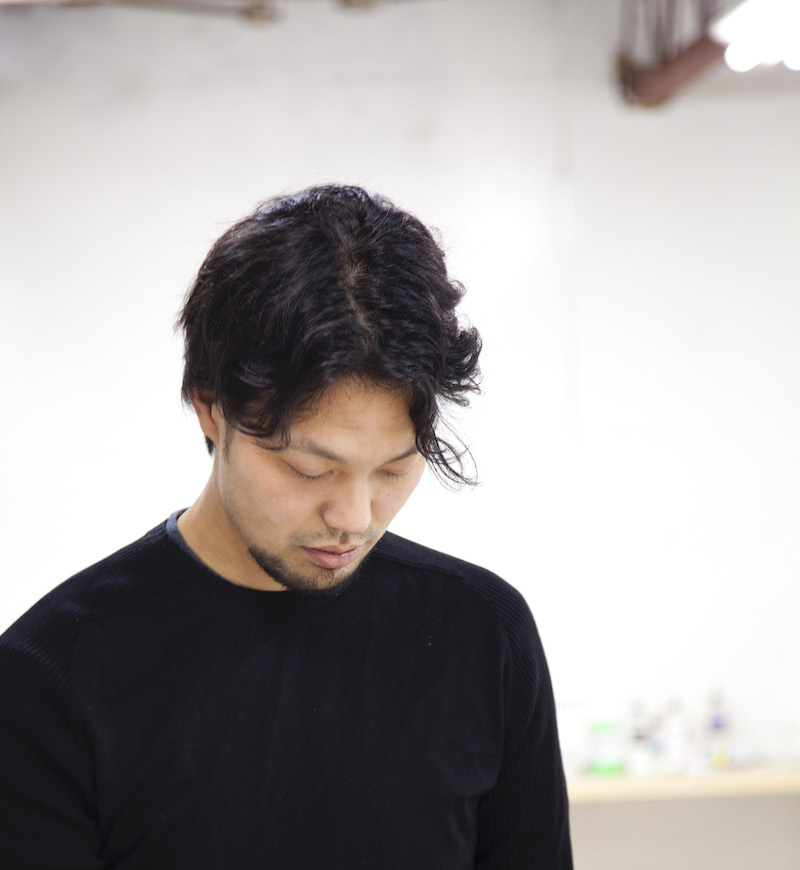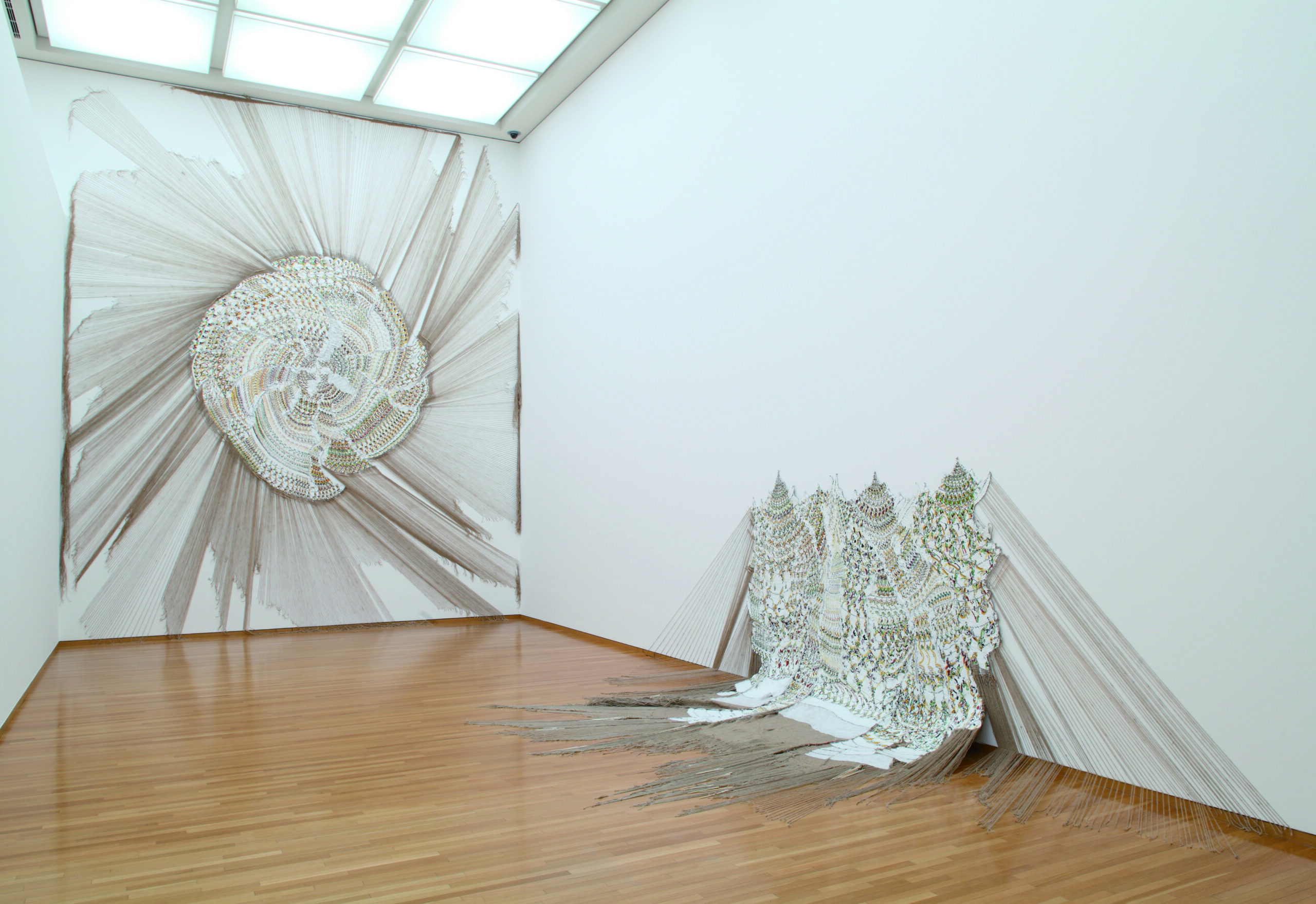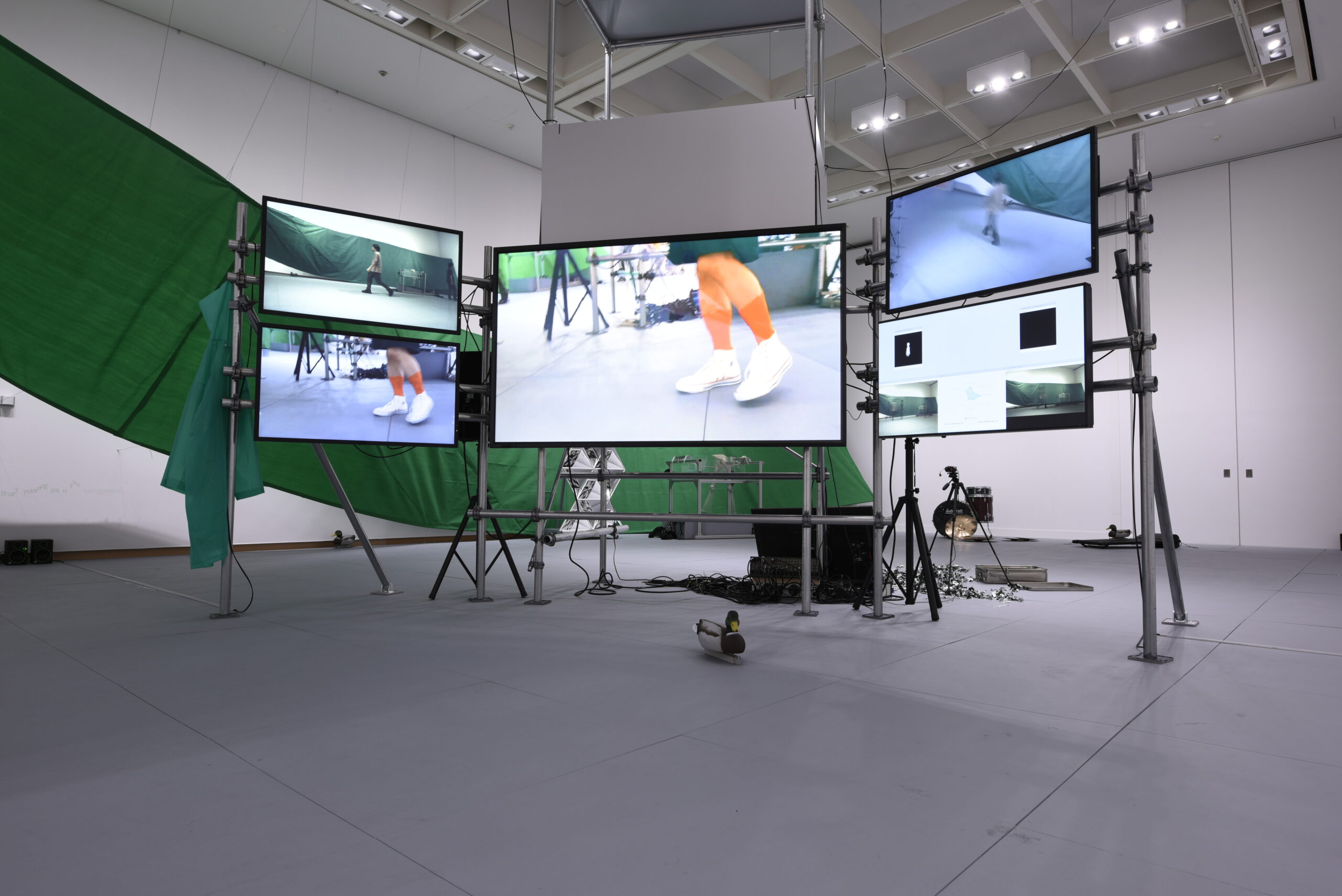Goro Murayama (1983-) is an artist who, based on his education in painting, engages with the question “How does the world emerge? in contemporary life science by expanding it to an artistic practice that involves the body and actions. He began his career with works that apply oil paints on organically woven linen which, along his body of work in a variety of media, including cellular automaton drawings, and cut up and recombined images and video, incorporate life-like processes and patterns, such as evolution, learning, and self-organization, by setting in place recursive rules to produce a work. Murayama has taken computer simulations, which occupy an important place in the epistemology of modern science, as a central motif, and developed it into a method of “poiesis accompanied by materiality. In recent years, he has turned his attention to AI-based (face and gait) biometrics technology and has created works that illuminate the nature of human perception in reverse as it were, through systems that allow machines to detect humans. In recent works, collaborations with scientists have become an important element too.
The pandemic of 2020 has laid bare the epistemological state of humanity based on computers and media. Knowledge of molecular biology and computer simulations is essential for understanding viruses and infection mechanisms, while communication of infection prevention measures, particularly under lockdown, is of course supported by information and communication technologies. However, human intuition is impoverished between those highly specialized sciences and technologies. The question is how to bring together the amount of information that can be obtained by one person and the options of possible actions that are available. We need to update the aesthetics that forge a relationship between the two. The science on emergence, which examine the cognition of the world through simulations and networked information generation, should provide a conceptual key in this endeavor.

Goro Murayama
Last update : 01 Jun. 2022
Works

Installation view
\"MOT collection-MOT.Field of Dreams\" Curated by Yuko Hasegawa.
The Museum of Contemporary Art Tokyo
2009
photo by Kioku Keizou
---
I make works that are made using a production system that weaves string together in order to make a type of canvas upon which I then apply a ground that I later draw upon.
As I weave and paint, the surface area of the piece gradually grows.
I see the relation between the making of the \'canvas\' and the act of drawing as a kind of interpenetration.
I weave the strings, apply the groundwork, draw the patterns, and then I observe.
The system is formed by repeating these four acts, constantly.

Installation view
\"Tokyo University of the Arts, Doctoral Program Final Exhibition\"
The University Art Museum
2014
Photo by Kei Okano.
---
“I make art and clean up a room.” “I clean up a room and make art.” The sequence switches. When the procedure of these two actions changes, you must be able to envisage two different scenes. If the former is related to maintaining a studio environment, the latter is about the run- up to production, that is, the replenishment of anticipation.
By the way, will you view my works after reading this text?
!Is there an ideal sequence for love? Is there a precise procedure for healing? Is there a perfect process for creation? A production process without a fixed sequence, one that is open to emergence prompted
by procedures. Based on this premise, we have to discover everything anew within the process, including love, healing, and creation.
By the way, will you read this text after viewing my works?
!Between a computer simulation and manual poiesis(the act of creation), there are differences in the richness of the procedures due to the speed, body,
and materialities that mediate them. Creativity resides in the procedure. That being said, they are similar in the sense that they start off entrusting themselves to ambivalence about the results, instead of calculating backward from the finished work.
Having said that, are you similar to me?
!I reconstruct the sequence of how you view works as my own procedure of creating them. By involving body and materiality, manual poiesis becomes pregnant with fluctuations in the choice of action. How about an algorithm used in computer simulation that gets tired? The process that includes unexpected breaks is full of opportunities to get sidetracked. Creation means finding a different circuit in the process of making art.
You reinterpret my procedure of creating as a sequence for viewing the work of art.

Installation view / Performance view
\"Decoy-walking\"
2019
Aichi Triennale 2019
[Aichi Prefectural Museum of Art, 10F, exhibition room 4.]
Installation view photos by Tetsuo Ito
technical support:
Osaka University, Yagi Lab.
Nagoya Institute of Technology, Sano Lab.
Performance actor:
Goro Murayama、Tetsuro Murayama、
Kiyotaka Suzuki、Minako Suzuki、
Tomomi Taoka、Keisuke Kagetsu
Drum:Shinji Wada[DMBQ]
Play direction:Ikumi Yang
Assistant director:Mikuu Yoshida
exhibition technician:Masayuki Miyaji
System engineer :Takanobu Inafuku[HAUS inc.]
video shooting:Yoshihiro Inada
recording:Yoichi Kamimura
CG:Takashi Anamura
Curator:
Meruro Washida、Fumiko Nakamura[APMOA]
---
”Decoy-walking,” an performance and installation piece that was newly created using “gait recognition” technology by which a computer can recognize characteristic human walking patterns. Several monitors set up at the entrance show documentary footage of a performance that was staged at the venue, as well as charts that indicate what kinds of characteristics the gait identification system was able to detect in walking persons. In the performance, performers tried out ways of walking that deviate from the recognized patterns, and thereby deceive the system.
Triangular mirrors[corner cube reflector] and aluminum foil[chaff] arranged in the circumference refer to military deception technologies to amplify or diffuse radar. This is collectively known as decoy, a term that originates from duck decoys (models) used in duck hunting. In this work it is used as a culture icon of sorts representing the deception of machines or living beings. Along with a drum as known from military bands as an element that constructs or destructs sound patterns, these are elements that are used with the aim to disturb the camera and the entire system. By juxtaposing such works, the artist metaphorically highlights the characteristics of technologies and systems for pattern-based recognition.
The installations revolve around technologies for recognizing patterns, and the presence of humans as objects of such technologies, as a central theme. Based on knowledge obtained from technical papers that constitute the background of technology, I explore the limits of recognizability of the world by way of technology, and imagine a new culture of body.